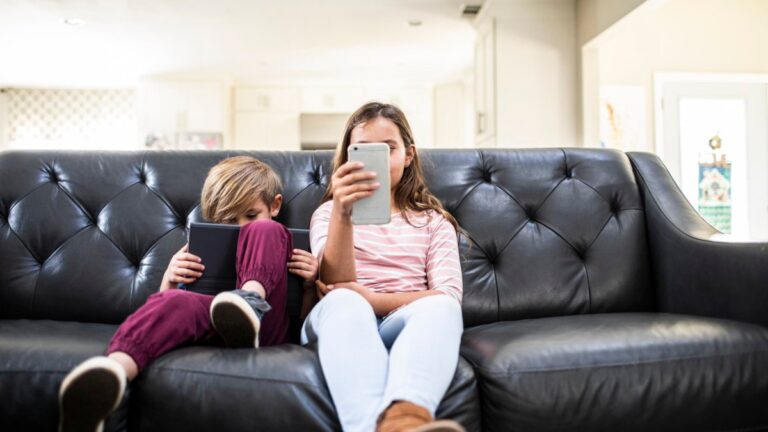Compass Health Center provides behavioral health care to 1,000 patients in crisis each day.
“Depression, anxiety, and suicide rates have risen dramatically over the past 20 years,” said Dr. Claudia Wilk, a psychiatrist and chief medical officer at Compass Health Center. While it’s not clear to what extent, Wilk said it’s evident that what kids watch online plays a role. “Research now points to the fact that social media, and children who use it for three hours a day, actually have more mental health problems,” she said.
Six Tips for Parents to Navigate Social Media
Dr. Wilk shared six tips for parents to keep in mind when it comes to navigating social media:
1. Look at Your Own Usage
“Make sure you’re modeling healthy behaviors when it comes to social media use,” Wilk said. Children often imitate their parents’ behaviors, so setting a good example is crucial.
2. Delay Access to Social Media as Long as Possible
“The Surgeon General advocates waiting until high school. That may not be practical for all families. But it’s something that, you know, I think is just a good rule of thumb to wait as long as possible,” Wilk suggested.
3. Set Limits
For kids and teens who are already using social media, cutting them off may not work, but experts say limits and guidelines should be set. This could include setting daily time limits or restricting access to certain platforms.
4. Make Sleep a Priority
It may seem like a no-brainer, but sleep is essential. Keeping cell phones, tablets, and even computers out of bedrooms at bedtime is key. “We know that kids need eight to nine hours of sleep for healthy brain development,” Wilk said. “So doing everything we can to limit social media use around bedtime is really important.”
5. Establish Tech-Free Times
Especially at bedtime, during meals, and during homework, experts recommend keeping devices out of kids’ hands. This encourages more face-to-face interactions and allows for better focus on tasks.
6. Talk to Your Kids About the Rules and Risks
“For parents, really, to communicate about the risks and let them (their kids) know that they can share what they see, and that they know they have a safe place at home,” said Yaron Litwin, chief marketing officer at Canopy, a monthly subscription service that uses AI to help manage and monitor your child’s screen time.
Tools and Apps to Assist Parents
“When a child comes across an inappropriate image, it will be filtered out. If a parent has set settings that require their phone to be turned off at 6 p.m. or so, the child will receive an alert that expires at the specified time,” Letwin explained.
Parents using Canopy have a dashboard that helps them create custom parameters for each device. “There is an umbrella to apply this, and it doesn’t become a parent versus child situation. In fact, there is a third party, and there is this app that provides some of these protective barriers,” Letwin said.
Parents should consider using apps like Canopy and others to help set boundaries and monitor children’s online behavior, Wilk said. “We can look at apps and things that help set the bar for how much time kids spend on social media, and what platforms they use,” Wilk said.
By implementing these strategies and utilizing helpful tools, parents can play a significant role in protecting their children’s mental health while navigating the challenges of social media.
All rights reserved to Chicago Vibe Magazine © 2024.
